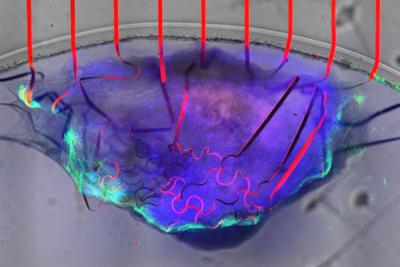Researchers measure superfluid stiffness of magic-angle twisted bilayer graphene
Researchers from MIT and Japan's National Institute for Materials Science have directly measured superfluid stiffness for the first time in “magic-angle” graphene — two or more atomically thin sheets of graphene twisted with respect to each other at just the right angle to enable a host of exceptional properties, including unconventional superconductivity. The term “superfluid stiffness,” or the ease with which a current of electron pairs can flow, is a key measure of a material’s superconductivity.
This superconductivity makes magic-angle graphene a promising building block for future quantum-computing devices, but exactly how the material superconducts is not well-understood. Knowing the material’s superfluid stiffness will help scientists identify the mechanism of superconductivity in magic-angle graphene. The team’s measurements suggest that magic-angle graphene’s superconductivity is primarily governed by quantum geometry, which refers to the conceptual “shape” of quantum states that can exist in a given material.



